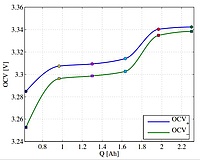Most of today’s battery-powered devices use a lithium based battery technology. In the majority LiCoO2 is used for the positive electrode mainly due to the resulting high energy density. The main drawback of LiCoO2 and other lithium metal oxide electrodes is their behavior in case of malfunction. The cell can easily catch fire if it gets overheated. This can happen either through a too high cell current (e.g. external short circuit in the application or an internal short circuit due to mechanical deformation) or due to an external heat source. Once the cell has caught fire there is almost no possibility to extinguish it since the needed oxygen is provided by the cell itself.
This problem can be solved by using a LiFePO4 based battery. Apart from the fact that this type of battery has a higher resistance to thermal runaway, it cannot burn without an external oxygen source. Additional it provides a longer cycle and calender life as well as iron and phosphate have a lower environmental impact than cobalt. The major drawback is the very flat open circuit voltage in dependence on the state-of-charge, (SOC) since the actual state of the art method to determine the SOC in the long run is always based on some kind of voltage measurement.
The proposed project deals with a different SOC determination method based on impedance spectroscopy. It exploits the fact that the impedance spectrum of a cell depends on its actual state defined by state-of-charge, state-of-health, temperature and nominal capacity. Therefore in a first step a database is created consisting of many measured impedance spectra describing a reference battery over the whole range of the boundary conditions. The reverse process of finding a battery state by searching the corresponding measured impedance spectrum in the database is nontrivial and most probably ambiguous due to measurement noise, cell to cell variations and other properties of the reference impedance spectra. Therefore this process should be described by statistical methods rather than by a simple look-up process.
The applicability of the proposed method is tested with several different applications.

